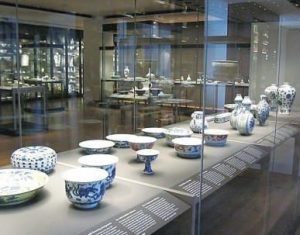
When you are visiting the museum, have you noticed that sometimes you will see such sign in the exhibition halls?

Everyone knows that it means no photos
Why is there such regulation?
Today, let’s find out the reason
Is taking pictures really harmful to cultural relics?
As for the reasons for no photos in the museum, the most likely explanation is to protect cultural relics. Is the answer so simple?
In fact, normal photography will not cause damage to cultural relics. The only thing that may cause direct damage is the flash.
Theoretically, almost all light can damage cultural relics, especially ultraviolet and infrared rays, which can cause structural damage to the surface of artifacts and lead to their aging. Therefore, no matter what cultural relics, the most ideal preservation environment should be absolutely dark.

But when we go to the museum to visit the exhibition, we can’t watch it in the dark. Light is obviously essential to the exhibition of the museum. Therefore, in view of the sensitivity of various cultural relics to light, the cultural relics protection department has also issued relevant regulations to strictly control the limit of light borne by cultural relics during the exhibition.
What impact will flash have on cultural relics?
Generally speaking, among the common exhibits, fabrics and paper are the most vulnerable to light damage.

It is understood that yellow, tan and red silk are easy to fade under light, and white silk has the least photoaging effect. Light has a great destructive effect on the silk fibers in black, red and tan color.
The main reason for the fading phenomenon is that the light changes the dye particles (or sericin, dirt particles, etc.) on the silk fiber. The light element in the flash lamp will also cause the color change of silk, resulting in the yellowing of white silk and the fading of dyed silk.
It can be seen that, at least for silk fabrics and ancient paper, frequent exposure of flash will still cause some damage.
Organic dyes are often used to add color to fabrics, while inorganic pigments, such as lead white and cinnabar, are also used in another color world – painting. So, can collections using inorganic pigments, such as oil paintings, escape the “damage” of flash?

Unfortunately, it can’t.
For example, there is a component called cadmium sulfide in bright yellow paint. This component is widely used by Monet, Van Gogh, Picasso and other masters because of its strong coloring power, stability and bright color. However, under the action of visible light, the sulfur in cadmium sulfide will be gradually oxidized to sulfate, and finally the pigment will be completely destroyed.
Leather, fur and feather are also photosensitive cultural relics, and small light changes may have an irreversible impact on them.
Some objects that look not that fragile can’t resist the repeated tossing of the flash, such as animal and plant specimens and bone vessels, which will also oxidize and decompose under the condition of light.
Therefore, there is a basis for banning photography in museums. Even though most museums now have no requirements for taking photos, some museums will note in the precautions: it is forbidden to use flash lights, selfie poles, etc.

In addition to the above reasons, sometimes some important exhibitions are often overcrowded, and many visitors just punch in for photos. Taking pictures will delay the progress of the tour and then cause crowded people.
In fact, whatever the reason is, the original intention of most museums to prohibit photography is to hope that the audience can enjoy works of art in a better atmosphere. Especially in many exhibitions today, elements such as light and sound are playing an important role. When the audience takes photos, it will not only affect the appearance, but also affect other visitors.
Comments